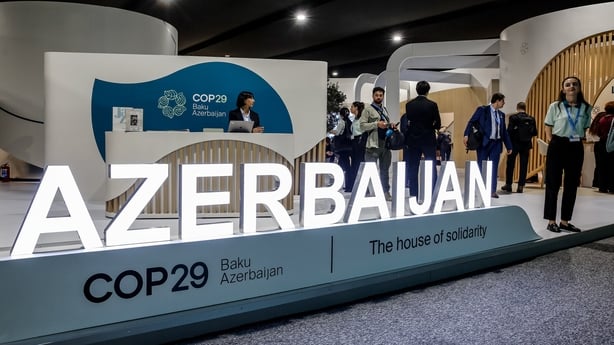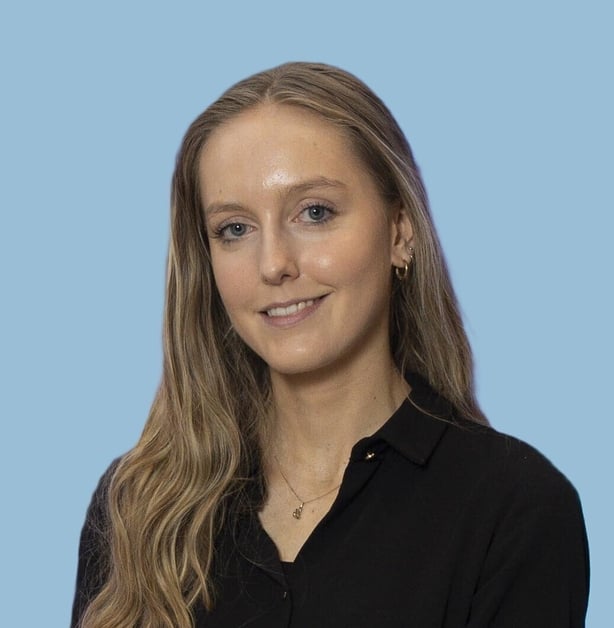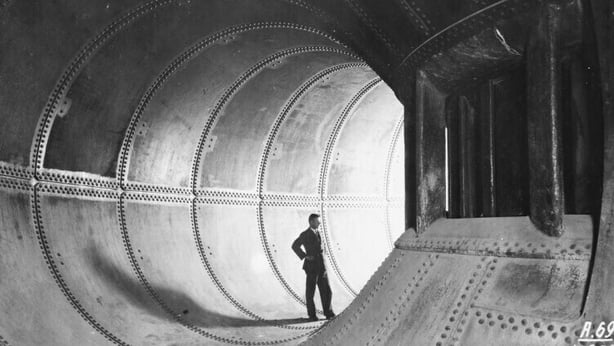Agus lagmhisneach ar go leor maidir le torthaí dhearfacha ag COP 29 in Asarbaiseáin is maith ann é go bhfuil dul chun cinn ar siúl i réimsí eile, mar is léir ag Bord Soláthair an Leictreachais na hÉireann agus scrúdú ar siúl aige ar tháirge hidrigin glas.
I bpáirtnéireacht leis an Ghearmáin, tá an ESB i mbun scrúdaithe ar hidrigin glas - saghas ar leith hidrigin - a tháirge in Éirinn ar mhaithe le cur leis na bealaí éagsúla le fuinnimh a ghiniúint sa tír seo agus farasbarr, más ann dó, a chur ar fáil don Ghearmáin.

Mhínigh Keelan Glennane, Speisialtóir Nuálaíochta an ESB do RTÉ.ie/Gaeilge faoin dtogra seo, HYreland.
So what exactly is the HYreland study?
This is a techno-economic analysis in collaboration with the German government and also the Irish government, the Department of the Environment and Communications. The study aims to evaluate the various hydrogen production and derivative pathways, also looking at the most suitable transportation options from Ireland to Germany.

Cé gurb é an chéad sprioc againn Éireann a dhícharbónú agus don ESB zero glan a sroicheadh fé 2040, tá sé aitheanta againn cheana féin go bhfuil poiteinseal ann, ó thaobh acmhainní inathnuaite de, i bhfad os cionn an éileamh baile a tháirgeadh. Mar sin is ag breathnú ar na bealaí éagsúla gur féidir linn an deis sin a thapú, nuair atá an earnáil leictreachais againn féin dícharbónaithe agus an t-éileamh ar fad baile comhlíonta.
You mention 'potential' and that's really the the keyword here because I'm presuming we don't have the infrastructural development that's required both to generate this domestically and to transport any surplus to Germany?
Exactly right. Currently we don't have all the renewable infrastructure built out in terms of all the wind farms, for example, so this will be really insightful in terms of highlighting areas to prioritise now and areas maybe to prioritise into the future, when you're looking at the various different products, what we call ‘power-to-X’ products; that's your hydrogen, your E-methanol, your ammonia and so on.
Ó thaobh na calafoirt againn, tá an t-adh linn go bhfuil sé seo bunaithe ar ainilís ar dhá suíomh de chuid an ESB, ceann acu ar chósta thiar na hÉireann ag Gob na Muine, áit a bhfuil an tarna calafort is doimhne san Eoraip i ndiaidh Rotterdam. Mar sin beidh ar ár gcumas na coimeádáin ollmhóra loinge a líonadh ansan len iad a iompar chun na Gearmáine.
We need your consent to load this rte-player contentWe use rte-player to manage extra content that can set cookies on your device and collect data about your activity. Please review their details and accept them to load the content.Manage Preferences
Éist le Claire Byrne ag caint le hiomaitheoirí toghcháin fén gníomhaíocht aeráide ar Today.
Where will green hydrogen fit into the overall energy strategy – its not the silver bullet obviously?
No, it's not. It’s part of the whole energy mix I would say and it's got quite an important role in terms of where we really see an area for green hydrogen and its derivatives, specifically in the area of hard-to-decarbonise industries. Essentially what that means is industries where electrification isn't an option. So for us we've got a thermal fleet that needs to be decarbonized and you need fuels to be able to put into that that are completely renewable. As well as that, we also need seasonal storage and we really see green hydrogen and its derivatives again as a form of seasonal storage or long term storage, whether it's weeks or months worth of storage. So that all really helps improve that resilience in terms of securities of supply for Ireland.
Cad é an tréimhse ama atá i gceist anseo?
Thosaigh an staidéar an mhí seo agus is staidéar bliana é, mar sin tá sé le críochnú ag deireadh Mí Dheireadh Fómhar 2025.
The German collaboration involves the electricity firm, BMBS; there are echoes of Ard na Croise here, with Siemens?
Absolutely. ESB started out by building its first hydropower station, which was over at Ardnacrusha. That actually marks its hundred year anniversary next year. Siemens won the contract for that and also brought over a huge amount of its workers to build that power station and not only just help build it but also to then teach our own workforce and transfer over those skills and capabilities.

In terms of our legacy and our collaboration with Germany, that's gone on since we've established about 100 years ago and now we're looking forward into the next 100 years; how can we continue to evolve and continue to become green? Fully green and decarbonized and yes, we're still working with Germany, 100 years on.








